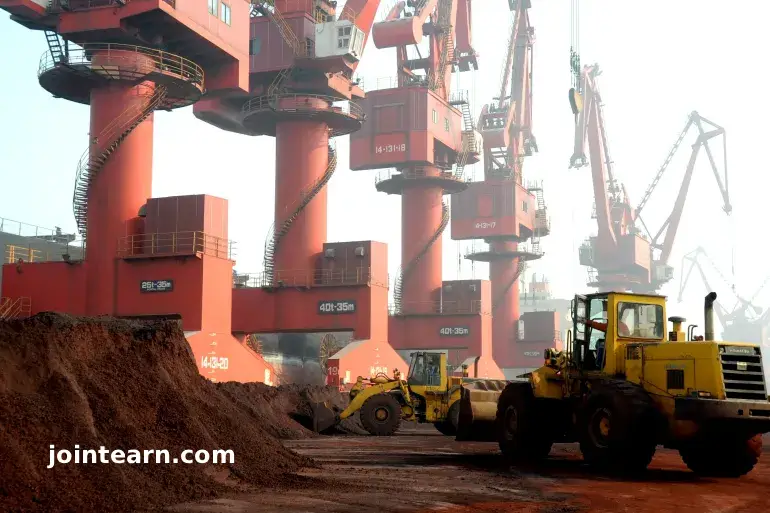
Beijing/Washington — October 21, 2025.
Despite mounting political pressure and billions of dollars in Western investments, China’s dominance in the global rare earths market is expected to remain unchallenged for at least another decade, according to industry experts. Analysts warn that breaking Beijing’s grip on these critical minerals — essential for advanced technologies such as smartphones, electric vehicles, and fighter jets — will be a slow and expensive process fraught with environmental and logistical hurdles.
The West’s Race to End Dependence on Chinese Rare Earths
Rare earth elements (REEs), including neodymium, terbium, yttrium, and holmium, are vital to modern technology and defense systems. Yet China currently accounts for 70 percent of global mining and 90 percent of processing capacity, giving it unparalleled control over the supply chain.
The United States and its allies have ramped up efforts to diversify supply chains, fearing that China could weaponize its dominance. The issue has become even more urgent after Beijing recently announced export restrictions on rare earth magnets and semiconductor materials containing Chinese-origin minerals — a move seen as retaliation in ongoing trade tensions.
“Even with strong political will and heavy investments, creating an alternative supply network with the same scale and expertise as China’s will take 10 to 15 years,” said Ryan Castilloux, founder of Adamas Intelligence. “The United States currently imports around 10,000 tonnes of rare earth magnets annually from China, while Europe imports more than 25,000 tonnes — and both figures are rising sharply.”
US Push for Rare Earth Independence Gains Momentum
The Trump administration has made rare earth security a top priority. Recent measures include stockpiling strategic reserves, fast-tracking mining projects, and investing in Canadian and Australian companies to ensure access to key minerals.
In October, Washington and Canberra signed an $8.5 billion bilateral agreement to co-invest in rare earth projects across Australia. The pact enables both governments to take ownership stakes in mining and processing facilities to safeguard long-term supply.
Earlier this year, the US also reached deals with Ukraine and Pakistan, aiming to secure alternative sources of critical minerals through strategic cooperation. These agreements mark a significant shift in Washington’s industrial policy, emphasizing economic security through resource control.
“Political urgency is driving investment, but the challenge goes far beyond mining,” noted Ross Chandler of the Australian National University. “It’s about building the entire midstream — refining, separation, and magnet manufacturing — which China has spent decades perfecting.”
Europe, Japan, and India Join the Rare Earth Diversification Effort
The European Union has adopted its Critical Raw Materials Act, setting targets for 40 percent of rare earth processing to occur within the bloc by 2030. Europe’s first rare earth magnet facility opened in Narva, Estonia, and France’s Solvay plant recently launched a new production line to reduce import dependency.
In Asia, Japan and India are expanding domestic exploration and partnering with resource-rich nations to mitigate supply risks. However, experts caution that despite political enthusiasm, environmental regulations, high costs, and limited expertise continue to slow progress.
“Even with aggressive investment, the permitting and ramp-up process for new facilities cannot be accelerated much faster,” said Chandler. “This is a multi-decade endeavor, not a short-term solution.”
China’s Strategic Advantage: End-to-End Supply Chain Control
China’s supremacy in rare earths is the product of decades of state-led industrial strategy. Unlike Western countries, Beijing pursued aggressive subsidies and tolerated environmental risks to gain a competitive edge. As a result, it now commands not only the raw material extraction but also refining and downstream manufacturing — an “end-to-end” ecosystem unmatched globally.
“China has invested in every link of the rare earth value chain,” said Hayley Channer of the United States Studies Centre. “It’s not just about mining — they control the refining, alloy production, and even the manufacturing of final products such as magnets and semiconductors.”
According to the Center for Strategic and International Studies (CSIS), China’s control of the rare earths market stands at 70% of mining and 90% of refining, effectively allowing Beijing to dictate global pricing and availability.
New Export Controls Heighten Global Tensions
Beijing’s latest export control measures, set to take effect on December 1, will require foreign firms to obtain licenses for products containing even trace amounts of Chinese rare earth materials. Analysts view this as a strategic power move ahead of a scheduled meeting between President Donald Trump and President Xi Jinping later this month.
“The new rules could magnify existing supply chain disruptions exponentially,” said Castilloux. “If fully implemented, the impact would make previous export restrictions seem like a minor inconvenience.”
A Long Road Ahead for the United States and Its Allies
While the US, Australia, and Europe collectively hold 35–40 percent of global rare earth reserves, they possess only 10–15 percent of refining capacity, leaving a massive gap in the midstream supply chain. Experts argue that it is this processing and metallization stage, not mining itself, that represents the biggest bottleneck.
“Post-2030, if all planned projects and recycling initiatives succeed, Western nations could meet most of their domestic demand,” said Rahman Daiyan of the University of New South Wales. “But a complete decoupling from China is unrealistic in the near term.”
Even if alternative supply chains emerge, analysts like Qarrem Kassim of the Institute of Strategic and International Studies believe that geopolitical competition between China and the West will persist.
“Reducing dependence on Chinese rare earths won’t reduce tensions,” Kassim said. “It will simply shift strategic competition to new industries and technologies.”
Conclusion: China’s Rare Earth Dominance Will Persist for a Decade
For now, China’s strategic advantage in the rare earth industry appears secure. Despite Western investments and political resolve, experts agree that building a self-sufficient supply chain will take at least 10–15 years, requiring not just funding but technical mastery and global coordination.
As demand surges for clean energy technologies and advanced electronics, the world’s dependence on rare earths — and on China — remains one of the defining challenges of the 21st-century industrial era.


Leave a Reply